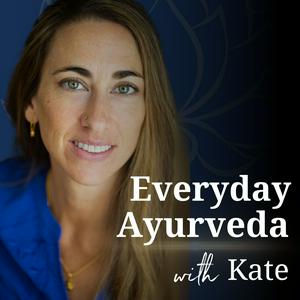15: My Life-altering Journey and Writing Process
Most of the questions I get asked while traveling revolve around my writing process or publishing journey. So, in this episode, I share my life-altering journey, explaining how a personal health challenge led me to discover Ayurveda and inspired me to write books to spread its wisdom. So, whether you dream of writing a book, are busy working on one, or are curious about the writing and publishing process, this episode is a must-listen.Join me. You may even find the spark to turn your writing ideas into reality!My Health Struggles When I was 20, I traveled to India, eager for adventure, but my health was a mess. I dealt with parasites, a weakened immune system, and gut issues and took antibiotics like Flagyl, which wrecked my digestive system. After I returned to India to seek treatment, a doctor in Mysore introduced me to the ancient Ayurvedic healing system.The Ayurvedic ExperienceI underwent Panchakarma, a powerful Ayurvedic detox that included oil rubdowns, milk pours, enemas, and a simple Kitchari diet. The experience was intense but transformative. It gave me a deeper understanding of Ayurveda and sparked my curiosity to learn more.Combining Yoga and AyurvedaI spent time teaching yoga and Ayurveda, balancing my time between India and the U.S. I started sharing simple Ayurvedic practices with my students, like tongue scraping and drinking hot water. I also noticed how confused many people were about food, so I wrote a cookbook.The Everyday Ayurveda CookbookWhen an editor from Shambhala Publications contacted me, I knew it was time to turn my ideas into a book. So, I wrote The Everyday Ayurveda Cookbook. It contains simple, seasonal recipes to help people understand how food can be medicine. The Publishing JourneyThe publishing process was not easy. It involved testing recipes, balancing the Ayurvedic philosophy, and ensuring it was user-friendly and accessible. I worked closely with a designer to create a visually appealing and informative book. The cookbook came out in 2015, and in 2025, I will release a 10th-anniversary edition of The Everyday Ayurveda Cookbook, with new recipes and a foreword by Amadeo Morning Star. Mind-Body Connection and the Second BookAs I continued working with people, I realized how much the mind influences our health and food choices. That led me to write my second book, Everyday Ayurvedic Cooking for a Calm, Clear Mind, about how Ayurveda can help us create mental calm and clarity, which supports our overall well-being.Writing in IndiaWhen in India, I have more time to write as there are fewer distractions. I get a lot of inspiration in India, especially from local food markets and healthy restaurants.The Struggles of Writing the Front MatterWriting the front matter for Calm, Clear Mind took me a year. Writing about the mind is tricky, complex, and often murky. I worked closely with my partner, Rich, who has experience with psychological work, to ensure the language was non-judgmental. Research and Inspiration from TextsI could not find many Ayurvedic resources on the mind, so I dug deep into texts like the Bhagavad Gita, which explores the connection between food and the mind. After extensive research, I also found insights from various yogic and Vedic texts that shaped my approach to writing about the mind.The Challenge of PublishingPublishing with Shambhala has been a rewarding experience for me. The vulnerability of handing over my work for the first time was a huge emotional challenge, but working with a trustworthy publisher made things easier. I published all four of my books with them because I trust their artistic vision and respect...

